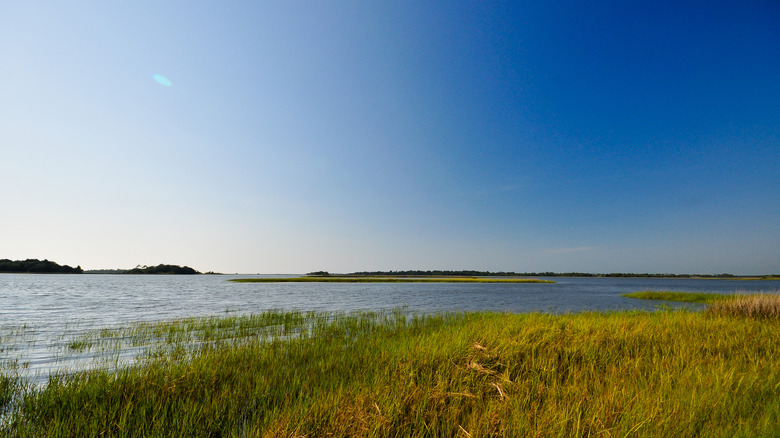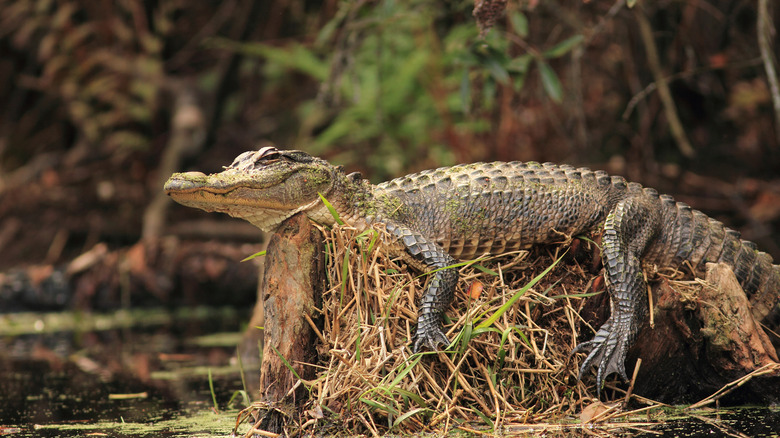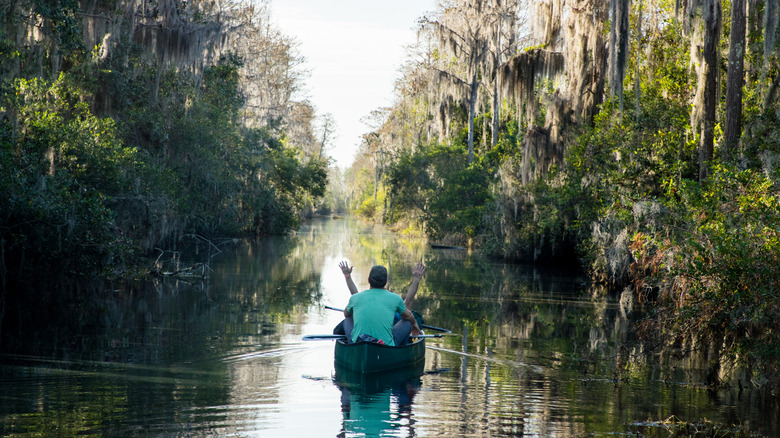
The Sunshine State is known as a haven of world-class beaches and resorts, but perhaps isn't as famous for the incredible natural beauty of its underrated state parks and wildlife refuges. Such areas offer a glimpse of the real Florida, where rivers, seas, and forests combine to offer a great array of outdoor attractions and the chance to encounter a diverse array of local flora and fauna.
A little over 50 miles southwest of Florida's diverse and inexpensive college city, Gainesville, the Lower Suwannee
National Wildlife Refuge is one such area. Founded in 1979, its roughly 53,000 acres are a haven for outdoor enthusiasts. It contains a huge, pristine river delta system and coastal marshlands. It's an ideal spot for canoeing or kayaking. There are several paddling routes, ranging between one and four miles in length, with signs to mark your way through the park.
The refuge is home to some of the state's most iconic wildlife. Amazing creatures you might encounter here include manatees, bottlenose dolphins, alligators, and black bears. There are several launching spots, including the town of Suwannee, that put you in the coastal waters, as well as in various creeks.
Read more: The 5 Most Alligator-Filled Destinations In All Of Florida
Hiking And Outdoor Pursuits At Lower Suwannee Wildlife Refuge

You don't have to take to the water to make the most of the Lower Suwannee National Wildlife Refuge. Simply pack your hiking gear and hit the miles of trails and boardwalks that weave through the refuge. Make sure to bring sunscreen and insect repellent, as there are plenty of biting bugs. Keep your eyes peeled for well-camouflaged critters such as gopher tortoises, which, while relatively large, can resemble rocks if you don't look closely.
If you are a birding enthusiast, be sure to bring your binoculars. More than 250 wild bird species have been spotted on the refuge, including ospreys and elegant swallow-tailed kites. There is plenty more wildlife that you will more easily spot with some magnification, including various bat species, including Brazilian free-tail and Rafinesque's big-eared bats.
The refuge is a great place to take part in outdoor pursuits, including fishing and hunting. There are several ponds of various sizes throughout, with a great range of freshwater species, including bass, sunfish, catfish, and perch. The saltwater species in the refuge's coastal waters include flounder, red drum, and spotted seatrout. It is also possible to purchase refuge hunting permits via the state, allowing firearms buck and hog hunts, seasonal small game and turkey shoots, as well as the use of archery and muzzleloaders.
Getting To The Refuge And Where To Stay

For such a pristine natural paradise, Lower Suwannee National Wildlife Refuge is surprisingly well-connected. Gainesville Regional Airport is around a 60-mile drive from the entrance to the refuge. The refuge includes 194 miles of roads and trails, which enable easy access and even more wildlife viewing possibilities.
This is a large refuge spread out over three areas, so be sure to download a map and research where you want to explore. County Road 357 from Cross City will bring you to the section of the refuge in Dixie County. From Old Town, County Road 349 takes you to Suwanne Town and the central section of the refuge along the Suwanne River. And finally, County Road 346 brings you to the southern section, located a few miles north of Cedar Key. Refer to the park website for detailed driving directions.
There is no camping or overnight parking allowed in the refuge itself. However, those looking to stay connected to nature as dusk arrives can pitch their tent or park their RV in nearby campgrounds. Several can be found on the banks of the Suwannee River, and there are a handful of nearby state parks. The nearby town of Chiefland, which also provides easy access to Manatee Springs State Park, is the place to go for reasonably priced hotels, with the Quality Inn and Days Inn by Wyndham both well-located options.
Ready to discover more hidden gems and expert travel tips? Subscribe to our free newsletter for access to the world's best-kept travel secrets.
Read the original article on Islands.











